¶ Straight Climbs
The technique for straight climbs varies according to the airspeed on entry and whether a constant airspeed or constant rate climb is made.
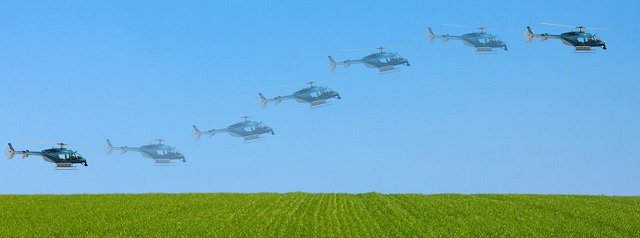
The application of both constant speed and constant rate climbs are quite similar. While the aim in constant rate of climb is maintaining target climb rate which is usually 500 fpm or 1000 fpm, it is maintaining the target airspeed in constant airspeed climb.
Even with high performance helicopters, climb rates more than 1000 fpm is not a common practice due to the high rate of pressure changes in an pressurized cabin and some aerodynamic concerns.
¶ Constant Airspeed Climb
This type of climb is more desirable for low performance helicopters. When the target airspeed is the max climb speed, helicopters get the most efficient climb performance.
¶ Instruments
For constant airspeed climb:
- Airspeed indicator and altimeter are primary instruments for pitch
- Heading indicator is primary instrument for bank
- Torque/manifold pressure is primary instrument for power
- Attitude indicator is supporting instrument for pitch and bank
- Vertical speed indicator is supporting instrument for pitch
- Turn-and-slip indicator is supporting instrument for bank control
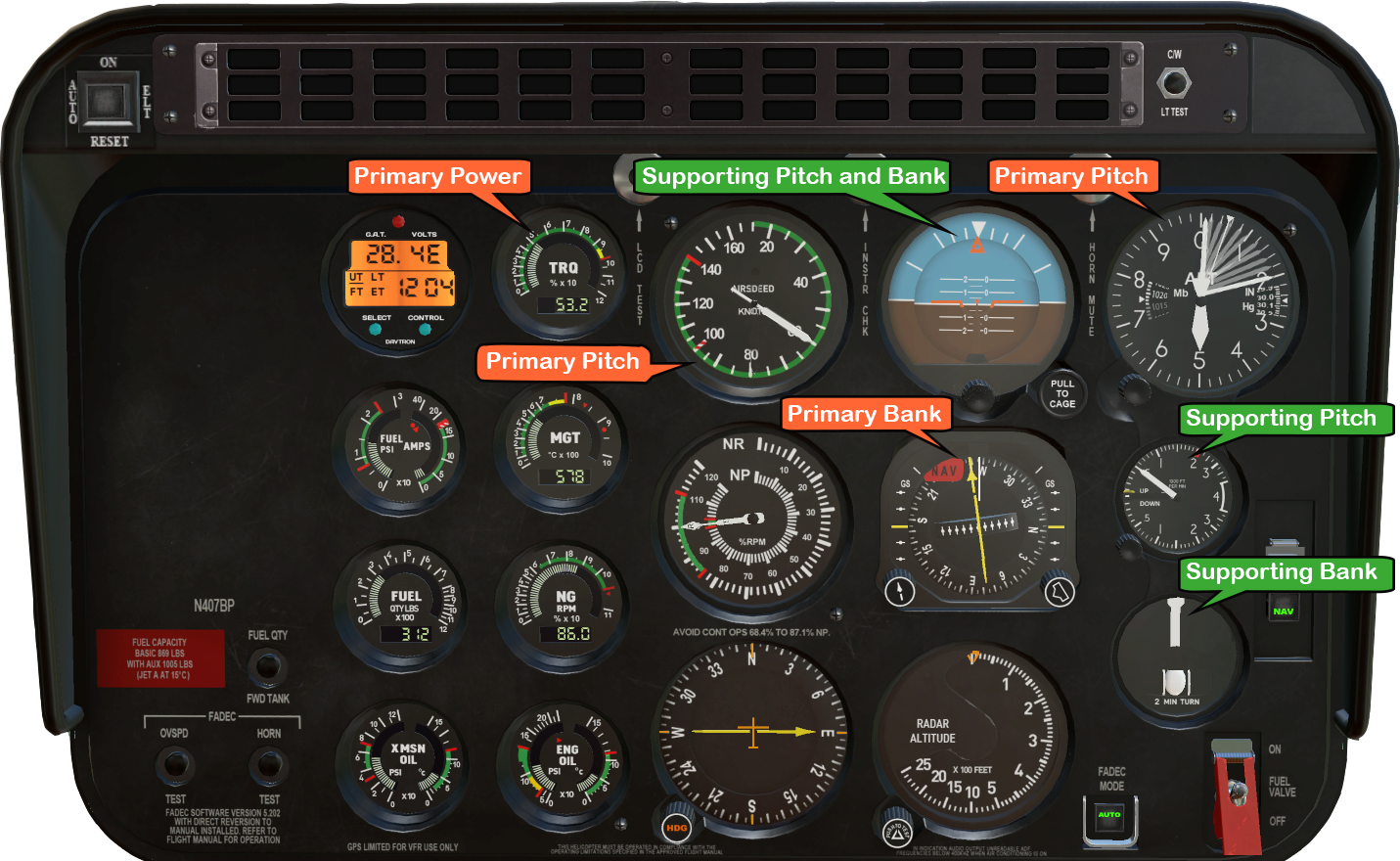
¶ Entry
- To enter a constant airspeed climb from cruise airspeed when the climb speed is lower than cruise speed, simultaneously increase power to the climb power setting and adjust pitch attitude to the approximate climb attitude.
A short deceleration period may be necessary to slow to a more efficient climb airspeed.
The increase in power causes the helicopter to start climbing and only very slight back cyclic pressure is needed to complete the change from level to climb attitude.
- When the helicopter stabilizes at a constant airspeed, continue cross-checking other pitch instruments.
¶ Level-off
The level off from a constant airspeed climb must be started before reaching the desired altitude according to vertical speed.
As a rule of thumb, use 10 percent of the vertical velocity as the lead point. For example, if the rate of climb is 500 fpm, initiate the level off approximately 50 feet before the desired altitude.
- When the proper lead altitude is reached, the altimeter becomes primary for pitch. Adjust the pitch attitude to the level flight attitude for that airspeed.
- If cruise airspeed is higher than climb airspeed, leave the power at the climb power setting until the airspeed approaches cruise airspeed, and then reduce it to the cruise power setting.
¶ Constant Rate Climb
This type of climb is generally used for training purposes. It is also used when a specific amount of climb is required in a specific amount of time.
¶ Instruments
For constant rate climb;
- Airspeed indicator is primary instrument for power.
- Heading indicator is primary instrument for bank.
- Attitude indicator is supporting instrument for pitch and bank.
- Vertical speed indicator is primary instrument for pitch.
- Turn-and-slip indicator is supporting instrument for bank control.
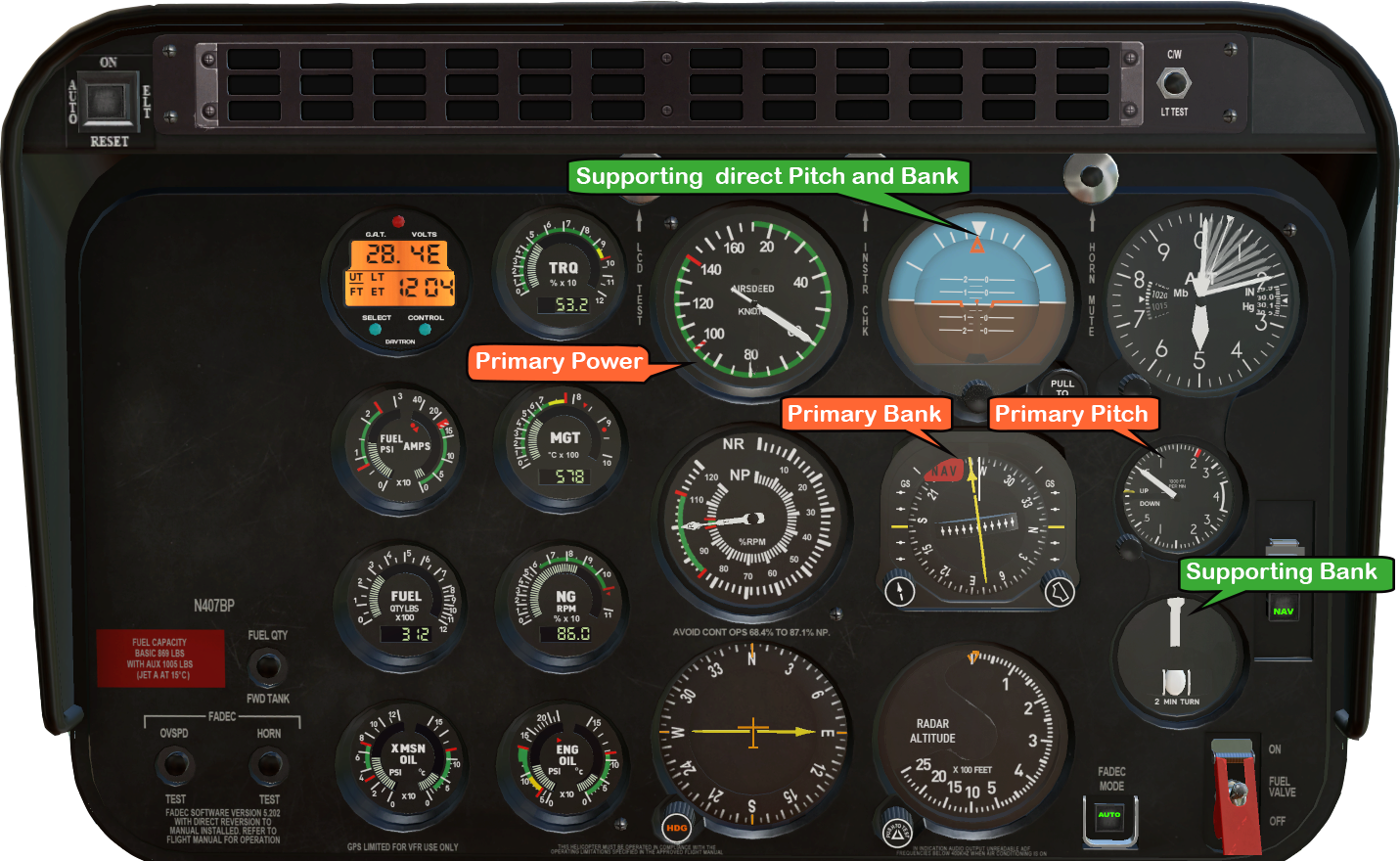
¶ Entry
The technique and procedures for entering a constant rate climb are very similar to those previously described for a constant airspeed climb.
For training purposes, a constant rate climb is entered from climb airspeed.
- To enter a constant rate climb, increase power to the approximate setting for the desired rate.
- As power is applied, the airspeed indicator is primary for pitch until the vertical speed approaches the desired rate.
- At this time, the VSI becomes primary for pitch. Change pitch attitude by reference to the attitude indicator to maintain the desired vertical speed.
- When the VSI becomes primary for pitch, the airspeed indicator becomes primary for power. Adjust power to maintain desired airspeed.
Pitch attitude and power corrections should be closely coordinated.
¶ Level-off
The level off from a constant rate climb is accomplished in the same manner as the level off from a constant airspeed climb.
¶ Practical Example
¶ Conditions and objective
Helicopter is in straight-and-level flight at 1500'.
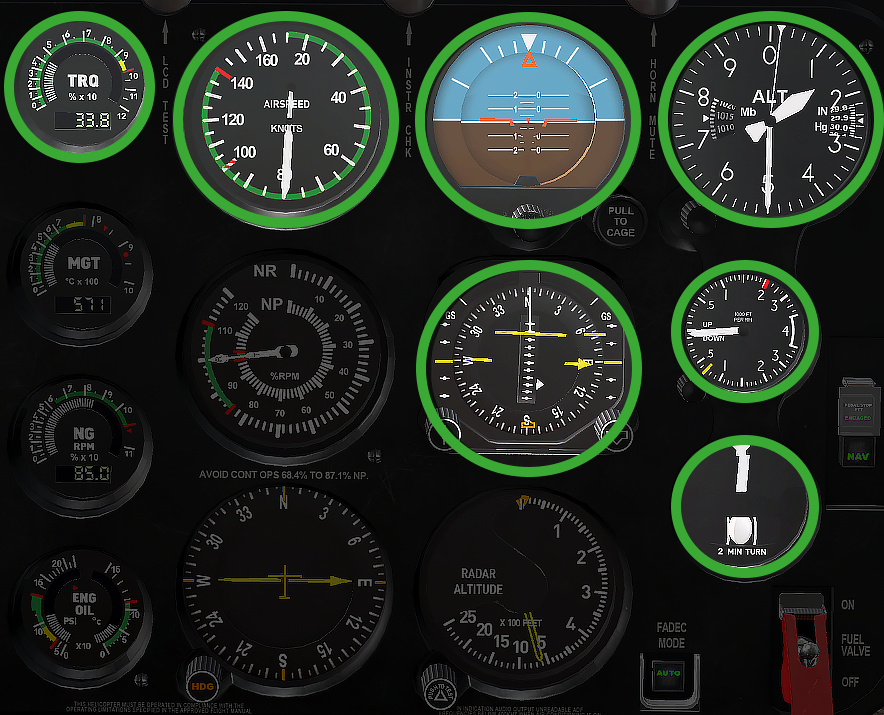
Objecive: Climb to 2000' at 60 knots with 500 fpm rate
¶ Entry
Simultaneously increase power to the climb power setting and adjust pitch attitude to the approximate climb attitude.
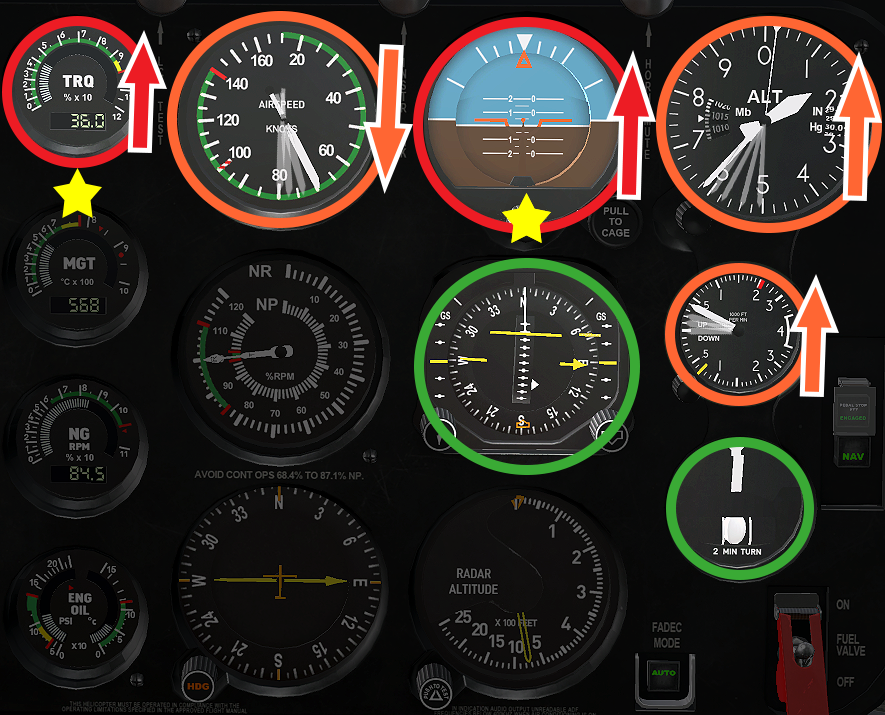
When the helicopter stabilizes at a target airspeed and vertical speed, continue cross-checking other pitch instruments and adjust the power and pitch as necessary.
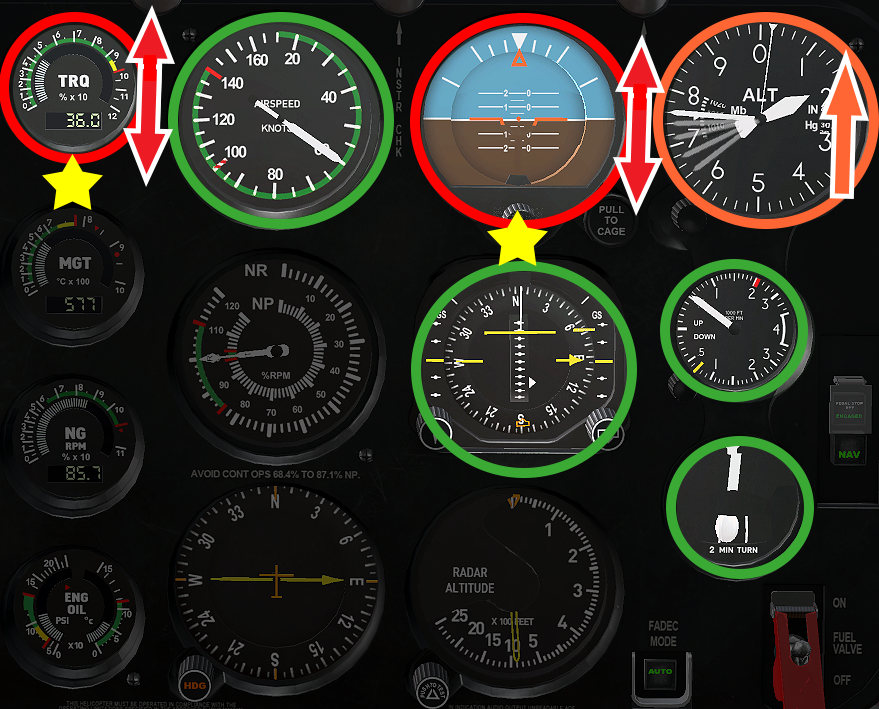
¶ Level-off
Initiate level-off by applying forward cycling at 1950' and leave the power at the climb power setting.
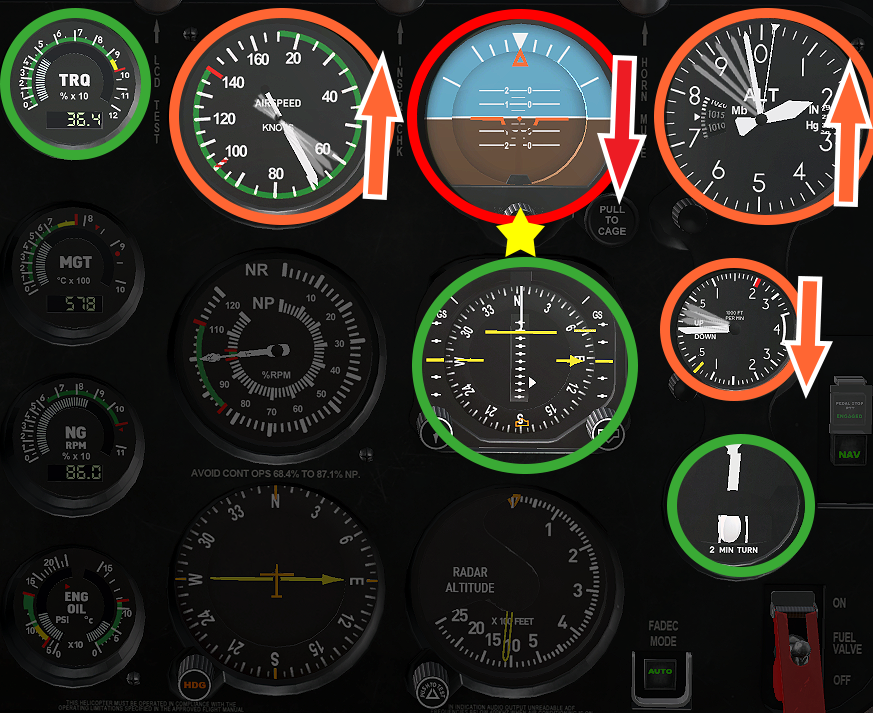
As airspeed approaches cruise airspeed, reduce power to the cruise power setting.
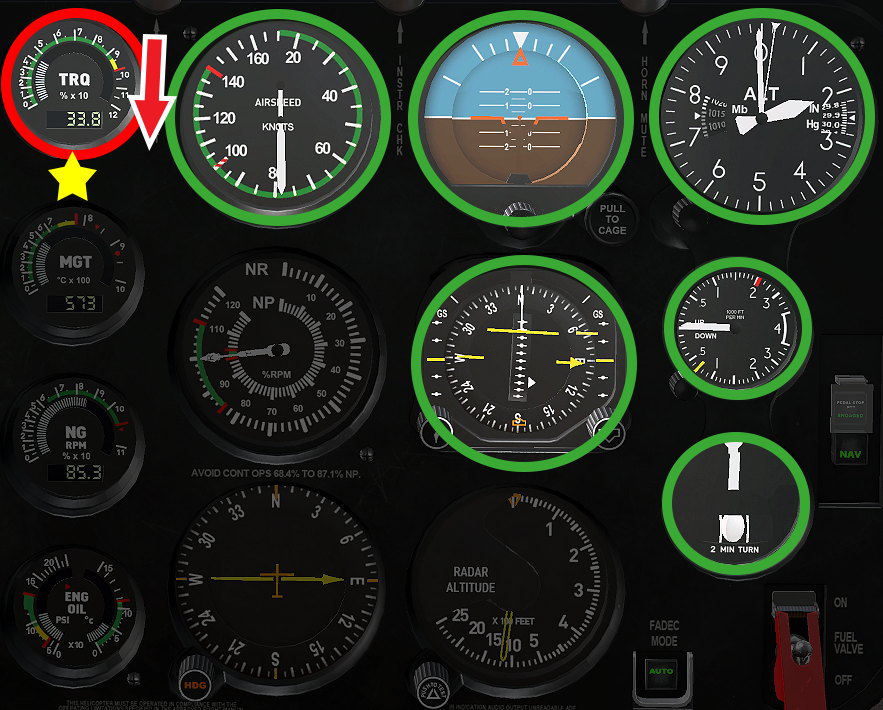
- Instrument Flying Handbook (FAA-H-8083-15B)
- VID 522050- Creation
- VID 496402 - Wiki.js integration